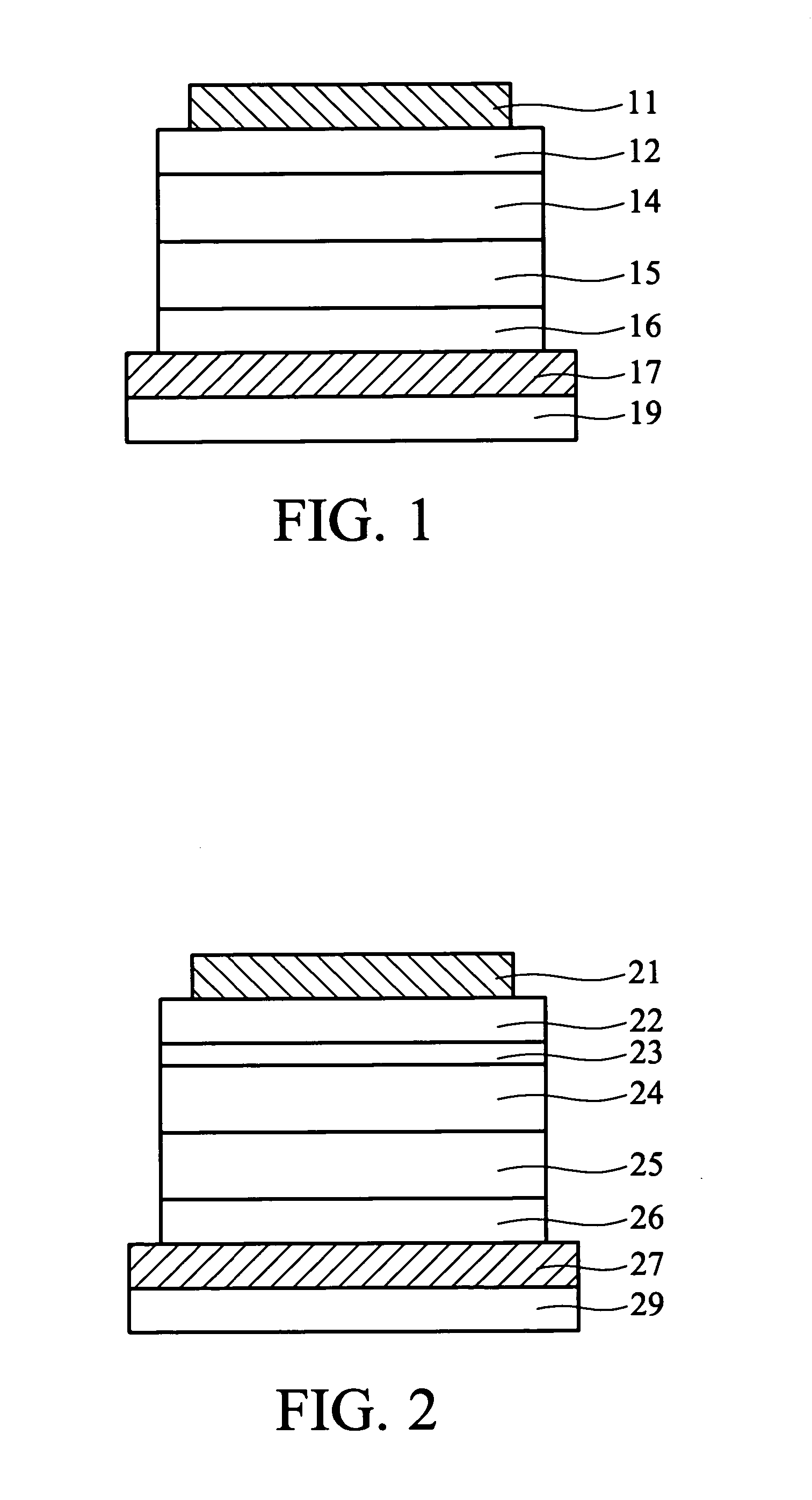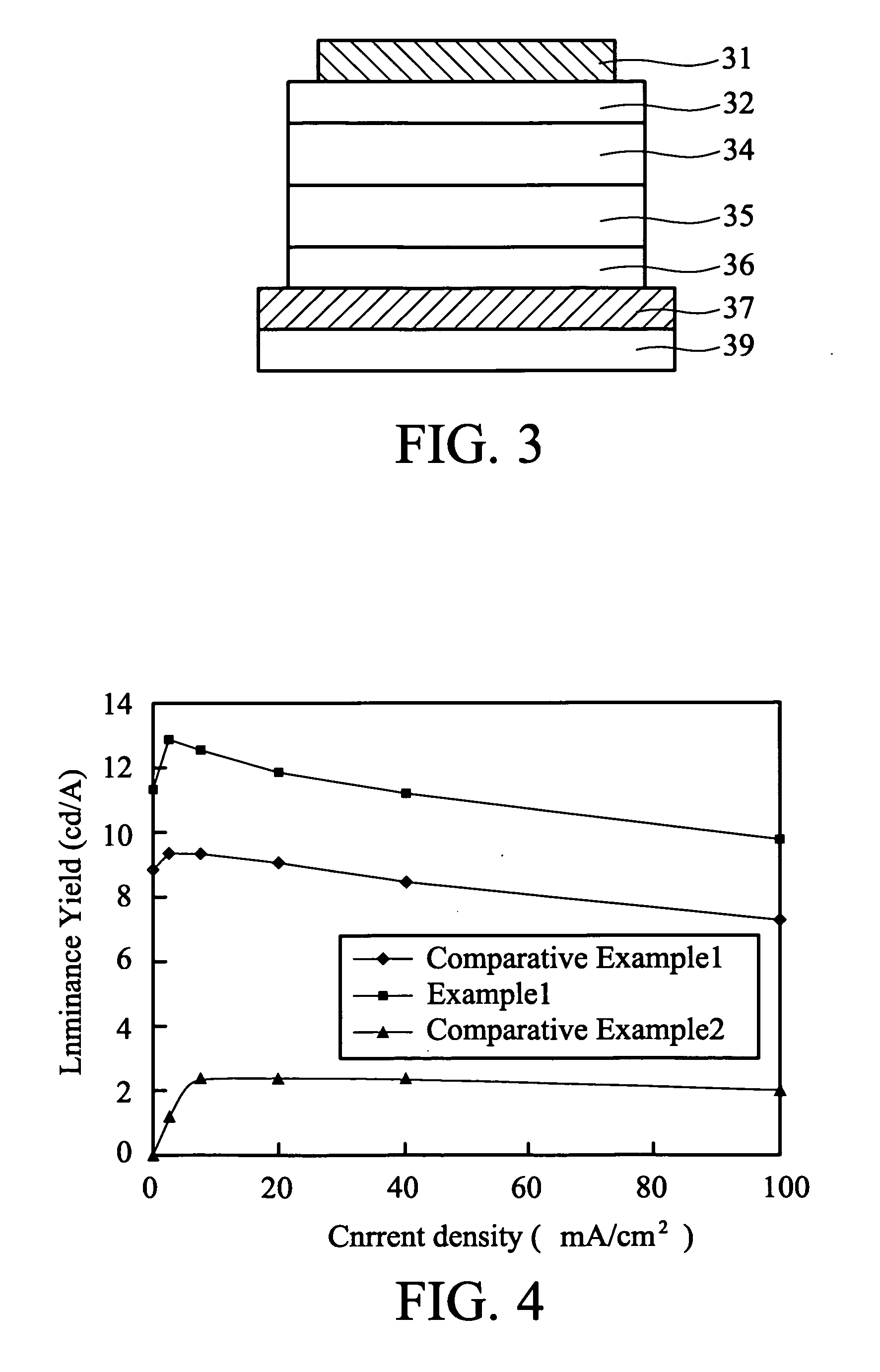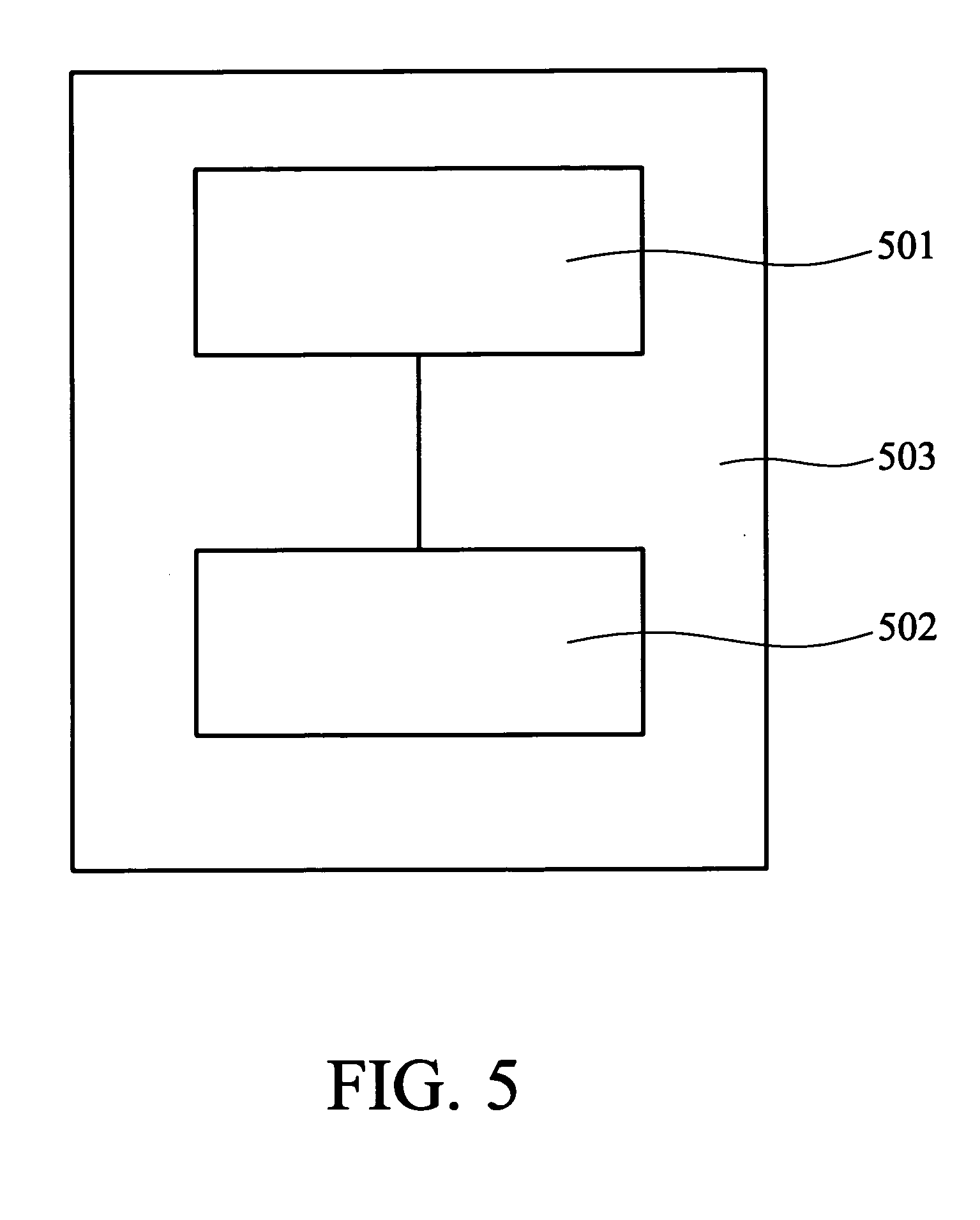Phosphorescent organic light-emitting diodes
a light-emitting diode and organic technology, applied in the direction of discharge tube/lamp details, luminescnet screen, discharge tube/lamp details, etc., can solve the problems of complicated process, serious delay in research and development of blue phosphorescent pixels compared to red and green phosphorescent pixels, and difficult phosphorescent molecules synthesis
- Summary
- Abstract
- Description
- Claims
- Application Information
AI Technical Summary
Problems solved by technology
Method used
Image
Examples
example 1
[0029]FIG. 1 shows a cross section view of Examples 1-3.
[0030] Anode 17: indium tin oxide (ITO) of about 700 angstroms on a glass substrate 19;
[0031] HIL 16: 4,4′,4″-tri(N-(2-naphthyl)-N-aniline)-triphenyl amine (2T-NATA) of about 150 nm;
[0032] HTL 15: N,N′-di-1-naphthyl-N,N′-diphenyl-1,1′-biphenyl-1,1′-biphenyl-4,4′-diamine (NPB) of about 600 angstroms;
[0033] light-emitting layer 14: CBP (phosphorescent host material) and BAlq (exiton blocking material) had a volume ratio of 70:30, and a red phosphorescent dopant had 15% volume ratio of the light-emitting layer; and the light-emitting layer had a thickness of 550 angstroms;
[0034] ETL 12: Alq3 of 300 nm;
[0035] EIL (not shown): LiF of 10 angstroms; and
[0036] cathode 11: Al of 200 nm.
example 2
[0037] Anode 17: indium tin oxide (ITO) of about 700 angstroms on a glass substrate 19;
[0038] HIL 16: 2T-NATA of about 150 nm;
[0039] HTL 15: NPB of about 600 angstroms;
[0040] light-emitting layer 14: CBP (phosphorescent host material) and BAlq (exiton blocking material) had a volume ratio of 70:30, and a green phosphorescent dopant had 8% volume ratio of the light-emitting layer; and the light-emitting layer had a thickness of 550 angstroms;
[0041] ETL 12: Alq3 of 300 nm;
[0042] EIL (not shown): LiF of 10 angstroms; and
[0043] cathode 11: Al of 200 nm.
example 3
[0044] Anode 17: indium tin oxide (ITO) of about 700 angstroms on a glass substrate 19;
[0045] HIL 16: 2T-NATA of about 150 nm:
[0046] HTL 15: NPB of about 600 angstroms;
[0047] light-emitting layer 14: CBP (phosphorescent host material) and BAlq (exiton blocking material) had a volume ratio of 70:30, and a blue phosphorescent dopant had 12% volume ratio of the light-emitting layer; and the light-emitting layer had a thickness of 550 angstroms;
[0048] ETL 12: Alq3 of 300 nm;
[0049] EIL (not shown): LiF of 10 angstroms; and
[0050] cathode 11: Al of 200 nm.
PUM
| Property | Measurement | Unit |
|---|---|---|
| thickness | aaaaa | aaaaa |
| thickness | aaaaa | aaaaa |
| thickness | aaaaa | aaaaa |
Abstract
Description
Claims
Application Information
 Login to View More
Login to View More - R&D
- Intellectual Property
- Life Sciences
- Materials
- Tech Scout
- Unparalleled Data Quality
- Higher Quality Content
- 60% Fewer Hallucinations
Browse by: Latest US Patents, China's latest patents, Technical Efficacy Thesaurus, Application Domain, Technology Topic, Popular Technical Reports.
© 2025 PatSnap. All rights reserved.Legal|Privacy policy|Modern Slavery Act Transparency Statement|Sitemap|About US| Contact US: help@patsnap.com



